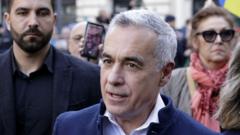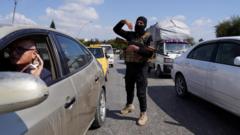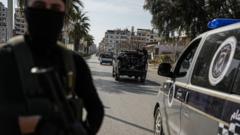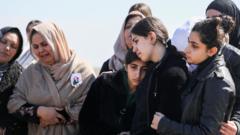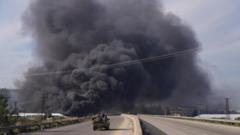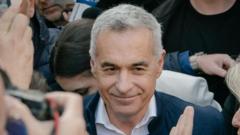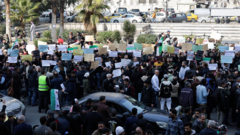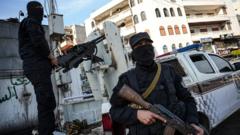Recent clashes in Damascus highlight rising tensions in Syria, as the new government grapples with deadly violence that has already taken the lives of over 1,300 people.
**Escalation of Violence in Syria: Fears Grow Over Stability**

**Escalation of Violence in Syria: Fears Grow Over Stability**
Amid rising unrest, clashes in Damascus signal concerns over the potential spread of violence from coastal regions.
In the night of March 10, 2025, gunmen launched an assault on a Syrian security forces' position in the Mezzeh district of Damascus, an area known for its fortified government presence. Reports from the Syrian Observatory for Human Rights signal that this violent encounter might be the onset of a broader wave of unrest extending beyond the coastal areas that have recently experienced turmoil.
The conflict has seen deadly violence, primarily proliferating in the coastal provinces of Latakia and Tartus, which hold strategic importance due to their association with the Alawite minority, a group historically aligned with former president Bashar al-Assad. The Observatory reported that over 1,300 fatalities have occurred since the conflict ignited, among which approximately 1,000 are civilians reportedly caught in the crossfire between rival factions, including those loyal to the ousted regime.
There has been little response from Syria’s interim government under Ahmed al-Shara, with state media quiet on the events, leaving the authenticity of the reports open to speculation. While military spokesperson Col. Hassan Abdul Ghani asserted that operations would cease, the unrest appears to persist, with government-aligned forces reportedly advancing into towns and igniting civilian homes in Baniyas.
Al-Shara announced the formation of a fact-finding committee to investigate these violent episodes, but uncertainty lingers over whether he is willing to hold his own forces accountable or squarely blame remnants of Assad’s regime. He urged for tranquility among the populace, advocating for national unity and peace while calling upon former allies of Assad to disarm.
As the violence escalates and the potential for sectarian conflict looms large, strength, and cohesion of the newly formed government are being critically tested in the wake of a decade-long civil war. The gravity of the situation prompts citizens and foreign observers alike to question the future stability of Syria under its new leadership, as many hope for a resolution to years of bloodshed.
The ongoing violence and its implications render the political and social landscape in Syria complex and precarious, leaving many unsure of what the future holds for this war-torn nation.
The conflict has seen deadly violence, primarily proliferating in the coastal provinces of Latakia and Tartus, which hold strategic importance due to their association with the Alawite minority, a group historically aligned with former president Bashar al-Assad. The Observatory reported that over 1,300 fatalities have occurred since the conflict ignited, among which approximately 1,000 are civilians reportedly caught in the crossfire between rival factions, including those loyal to the ousted regime.
There has been little response from Syria’s interim government under Ahmed al-Shara, with state media quiet on the events, leaving the authenticity of the reports open to speculation. While military spokesperson Col. Hassan Abdul Ghani asserted that operations would cease, the unrest appears to persist, with government-aligned forces reportedly advancing into towns and igniting civilian homes in Baniyas.
Al-Shara announced the formation of a fact-finding committee to investigate these violent episodes, but uncertainty lingers over whether he is willing to hold his own forces accountable or squarely blame remnants of Assad’s regime. He urged for tranquility among the populace, advocating for national unity and peace while calling upon former allies of Assad to disarm.
As the violence escalates and the potential for sectarian conflict looms large, strength, and cohesion of the newly formed government are being critically tested in the wake of a decade-long civil war. The gravity of the situation prompts citizens and foreign observers alike to question the future stability of Syria under its new leadership, as many hope for a resolution to years of bloodshed.
The ongoing violence and its implications render the political and social landscape in Syria complex and precarious, leaving many unsure of what the future holds for this war-torn nation.

